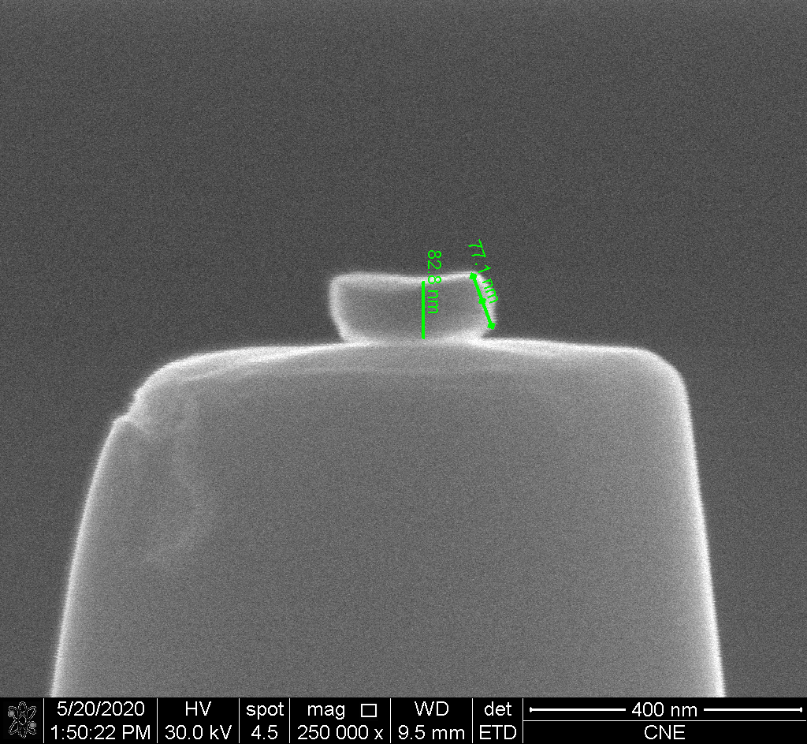- Ruhr-Universität Bochum

Electrocatalysis and In-Depth Electrochemical Characterization of Structure-Activity and Defect-Activity Relations
In project A2 of the CRC/TR 247 anodic alcohol oxidation and the oxygen evolution reaction (OER) are induced by applying a potential in an electrochemical cell comprising three electrodes. A suitable ink has to be applied to attach the NPs to a working electrode made of glassy carbon. As a starting point, linear sweep voltammetry and rotating disk experiments (RDE) are performed to determine the overpotential needed to achieve a certain current density. In-depth studies aim at determining the electrochemical properties of single NPs by performing nanoparticle impact measurements or by applying microelectrodes with individually immobilized NPs. Single-particle electrochemistry comprises particle-at-the-stick measurements and scanning electrochemical cell microscopy (SECCM). The figure shows an individual Co3O4 hexagon particle immobilized on the surface of a carbon nanoelectrode. Using a specifically designed transmission electron microscopy (TEM) holder, the particle on the nanoelectrode can be evaluated with respect to structural changes by means of identical-location TEM after challenging the catalyst particle at high electrocatalytic turnover rates.
Spectroscopic techniques such as ATR-IR and Raman spectroscopy are applied in situ to monitor reaction intermediates and structural properties, supported by identical location and liquid-cell TEM studies. By combining the results of thermal and electrocatalysis with the structural characterization in area B, the analysis of the impact of the real structure on the catalytic properties is expected to lead to reliable defect-activity correlations, which have to take the dynamics of the applied cobalt oxide nanoparticles under strongly oxidizing conditions in the liquid phase into account.
